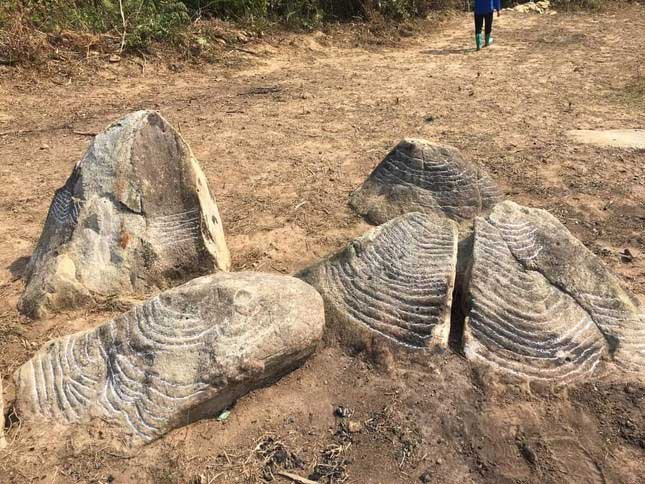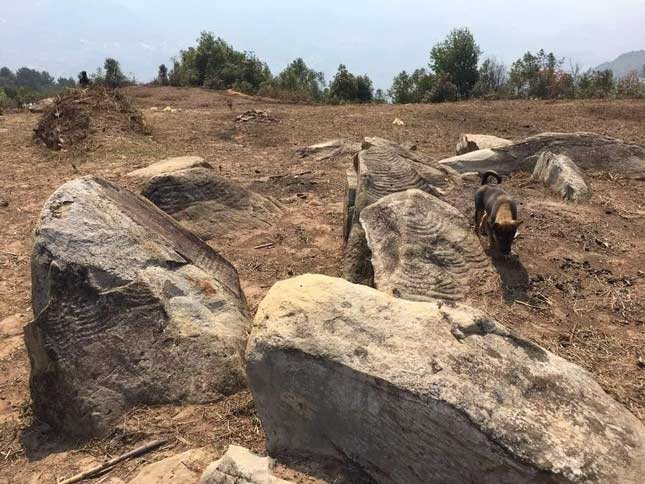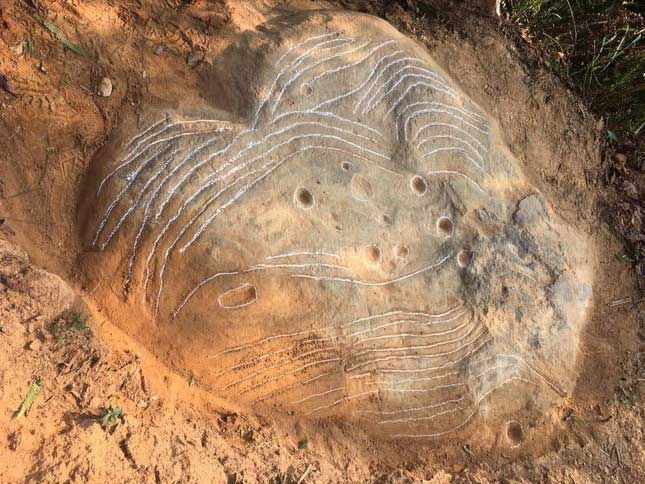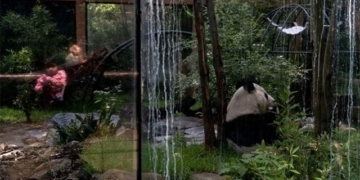On April 3rd, Mr. Ly Kim Khoa, Deputy Director of the Yen Bai Provincial Museum, informed our reporter that the museum has recently collaborated with the Institute for Applied Cultural and Tourism Research to discover a new site featuring numerous ancient stone blocks depicting terraced fields in Che Cu Nha commune, Mu Cang Chai district, dating back to the 16th to 17th centuries.
The ancient stone blocks are located at an altitude of approximately 1,000 meters above sea level, in Hang Chua Xay village, about 4 kilometers east of the Che Cu Nha commune People’s Committee.

Fifteen ancient stone blocks depicting terraced fields recently discovered in Mu Cang Chai, dating back to the 16th – 17th centuries.
The ancient stone blocks are carved in two clusters, spaced about 15 meters apart, with a total of 15 blocks arranged in a north-south direction, with volumes ranging from 0.5 to 4 m3. The surfaces are slightly convex and are intricately carved with concentric circular and diamond shapes.
The most frequently depicted motif is the terraced field “layer upon layer”, which decorates the edges and bodies of the stone blocks, creating a “unique piece of art”.

The stone blocks feature distinctive patterns.
Preliminary findings suggest that the carved motifs are quite intricate, gracefully flowing along the contours of the stone, resembling terraced fields. This theme is the primary focus on these stones, similar to those previously discovered in the villages of Hong Nhi Pa, Ta Gheng, and Hu Tru Linh in Lao Chai commune in the years 2015, 2020, 2021, and 2022.
What sets the site apart is that Hang Chua Xay village has a significant concentration of ancient carved stone blocks, while other locations feature very few. According to the Archaeological Institute, this site is considered the “center of ancient stone carving in Mu Cang Chai”, showcasing many beautifully and uniquely patterned stone blocks.

According to the leadership of the Yen Bai Provincial Museum, the unit is currently collaborating with the Yen Bai Provincial Department of Culture, Sports, and Tourism to revive the stone worshiping tradition of the Mong people in Mu Cang Chai.
Mr. Ly Kim Khoa further stated that, based on comparative analysis, the carved images on the stones closely resemble the terraced fields that the Mong people of Mu Cang Chai are currently cultivating and gradually expanding.
According to Mr. Khoa, with these unique features, the museum is working with the Department of Culture, Sports, and Tourism to revive the stone worshiping tradition of the Mong people in order to promote tourism that is closely tied to the traditions of the local Mong community.


















































